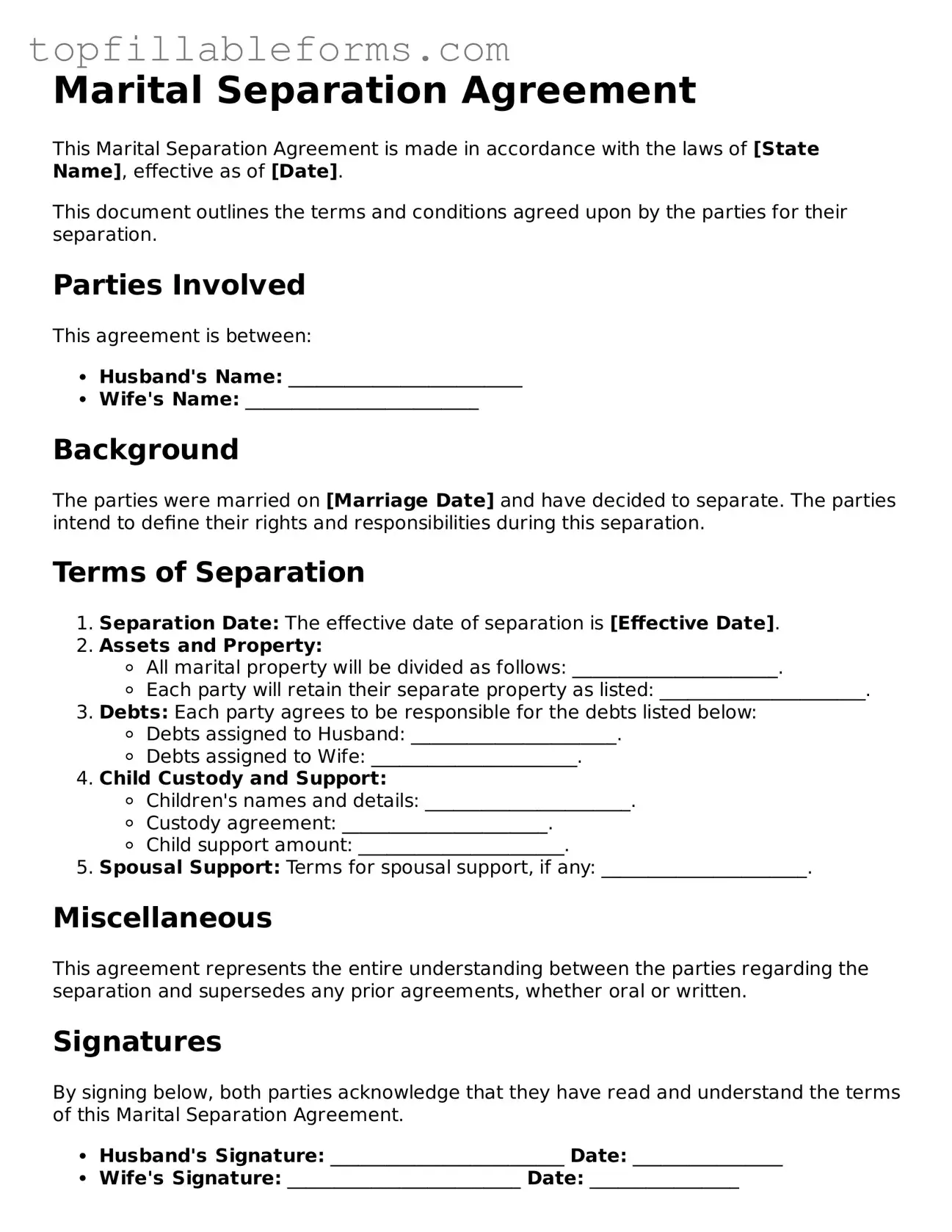Marital Separation Agreement
This Marital Separation Agreement is made in accordance with the laws of [State Name], effective as of [Date].
This document outlines the terms and conditions agreed upon by the parties for their separation.
Parties Involved
This agreement is between:
- Husband's Name: _________________________
- Wife's Name: _________________________
Background
The parties were married on [Marriage Date] and have decided to separate. The parties intend to define their rights and responsibilities during this separation.
Terms of Separation
- Separation Date: The effective date of separation is [Effective Date].
- Assets and Property:
- All marital property will be divided as follows: ______________________.
- Each party will retain their separate property as listed: ______________________.
- Debts: Each party agrees to be responsible for the debts listed below:
- Debts assigned to Husband: ______________________.
- Debts assigned to Wife: ______________________.
- Child Custody and Support:
- Children's names and details: ______________________.
- Custody agreement: ______________________.
- Child support amount: ______________________.
- Spousal Support: Terms for spousal support, if any: ______________________.
Miscellaneous
This agreement represents the entire understanding between the parties regarding the separation and supersedes any prior agreements, whether oral or written.
Signatures
By signing below, both parties acknowledge that they have read and understand the terms of this Marital Separation Agreement.
- Husband's Signature: _________________________ Date: ________________
- Wife's Signature: _________________________ Date: ________________
This agreement should be notarized for additional legal validity.
